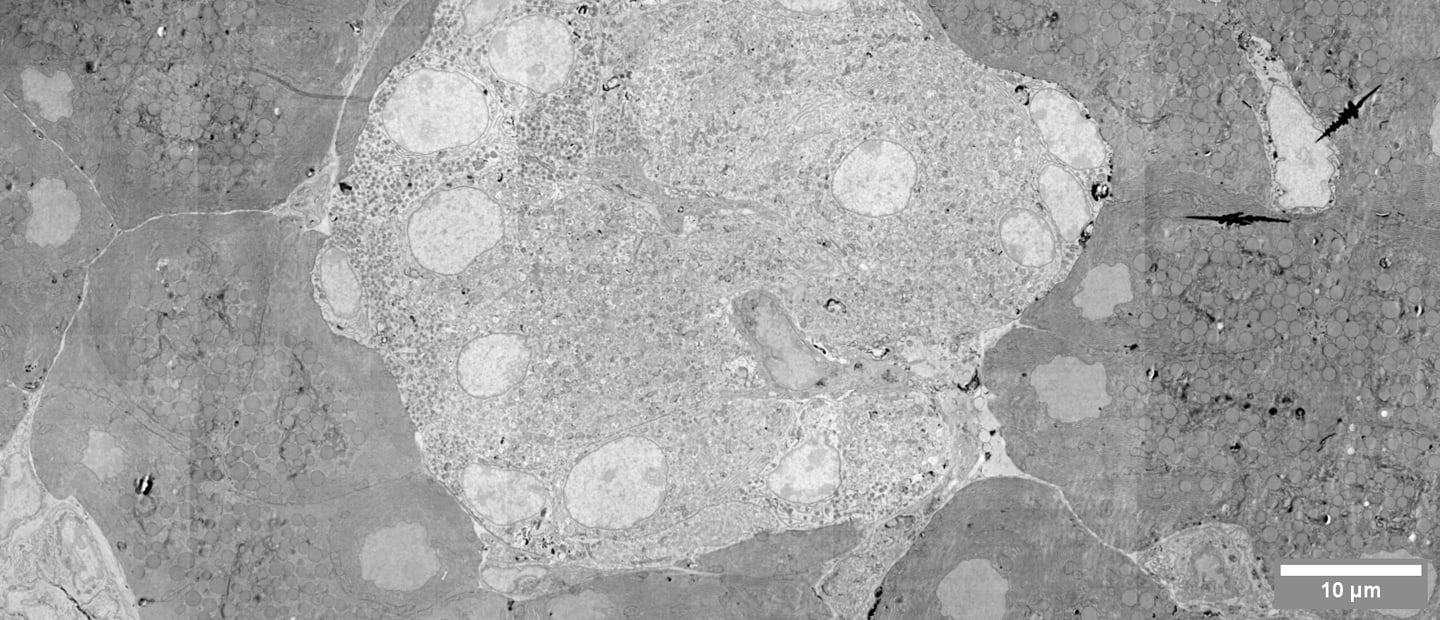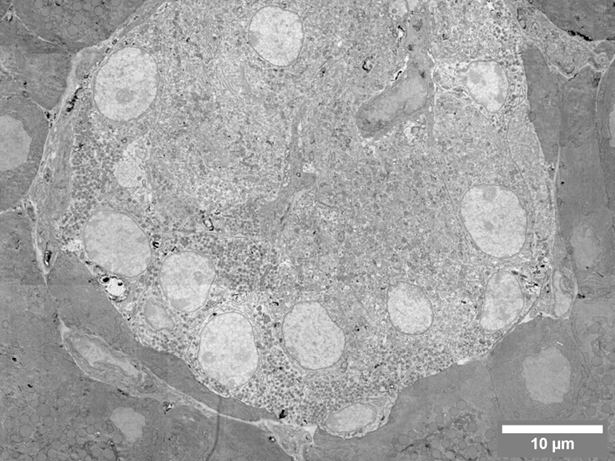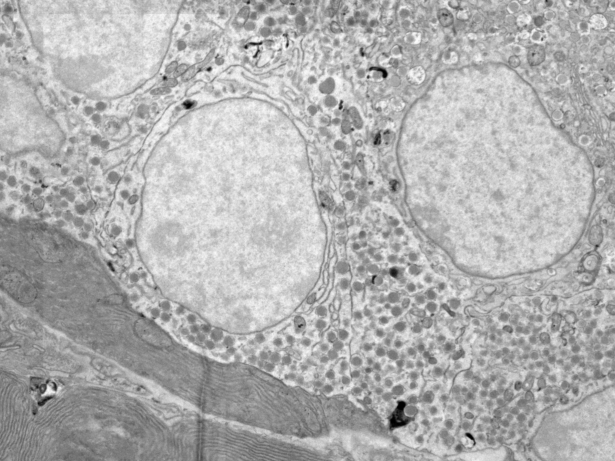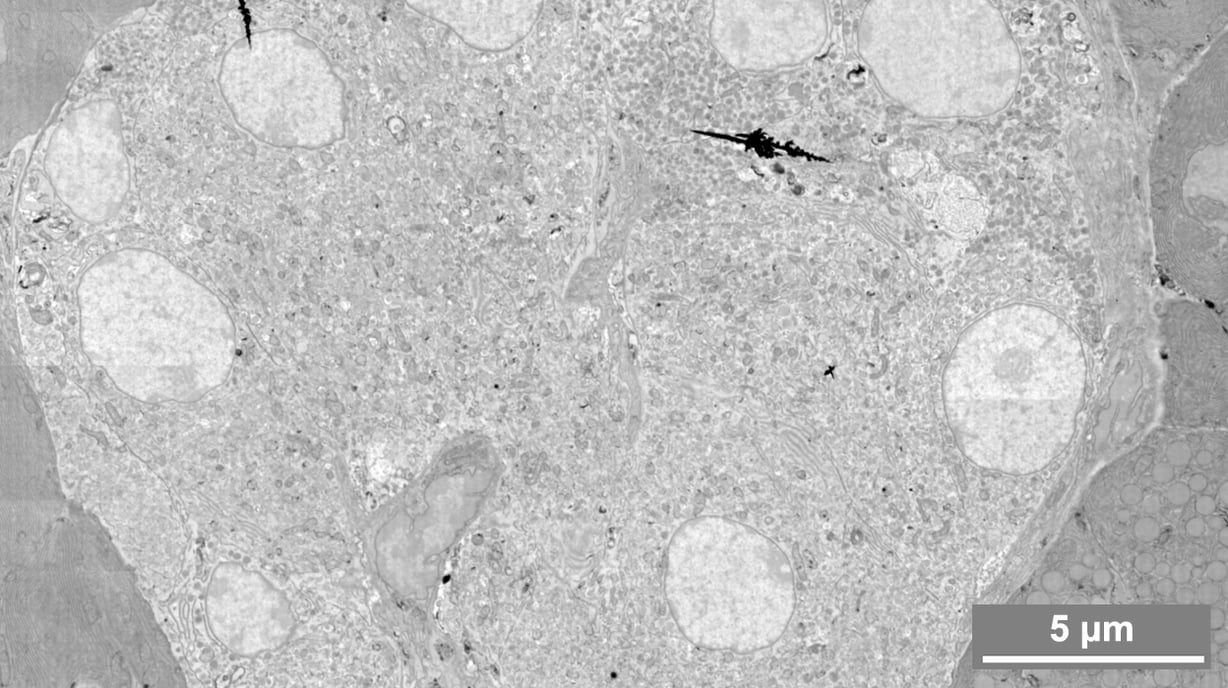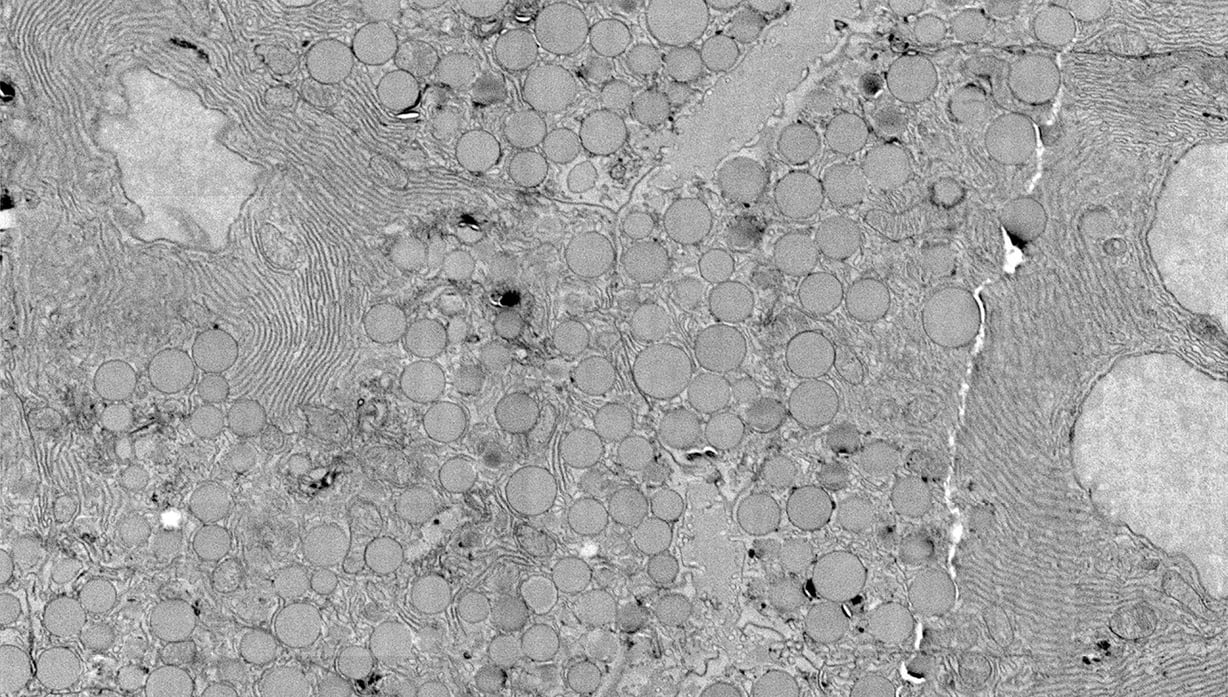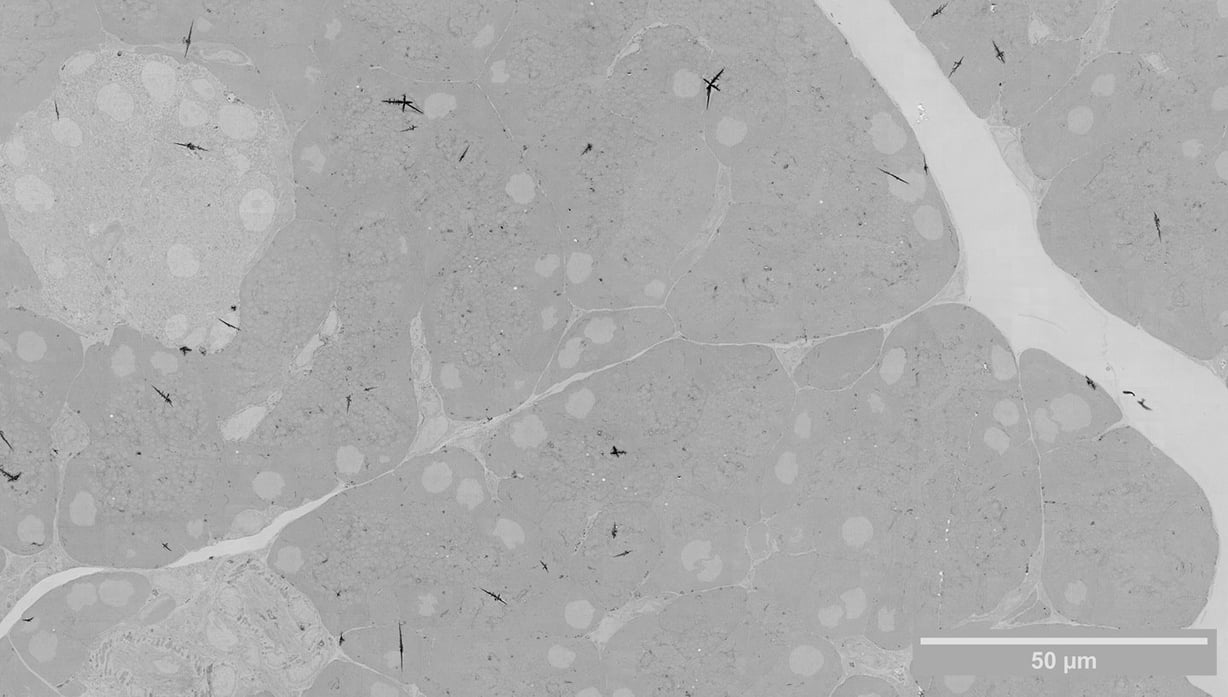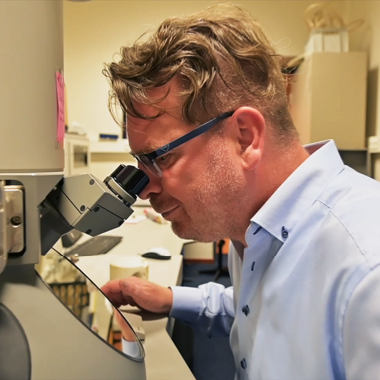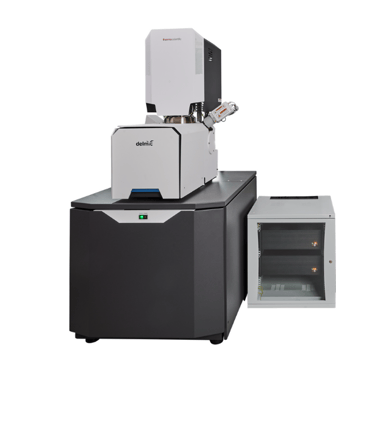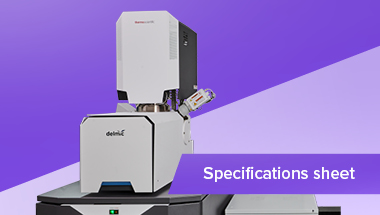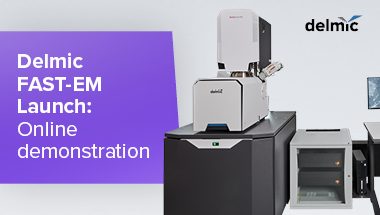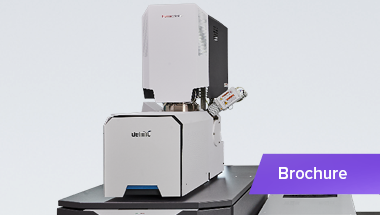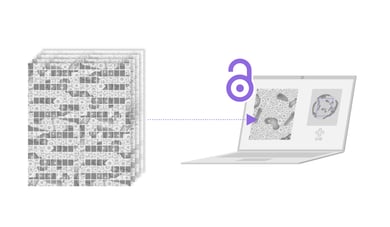We created a powerful multibeam SEM, FAST-EM, which can rapidly visualize large regions, at nanoscale resolution. Its ability to image 100 times faster than a regular SEM and the high level of automation makes FAST-EM a perfect system for imaging the whole tissues or organs. Such high-throughput imaging enables comparative studies, where multiple samples need to be imaged and compared between healthy and diseased conditions. FAST-EM also enables a bias-free method of recording data: samples are imaged in their entirety, rather than specific parts relevant only to the research question.
.png)




